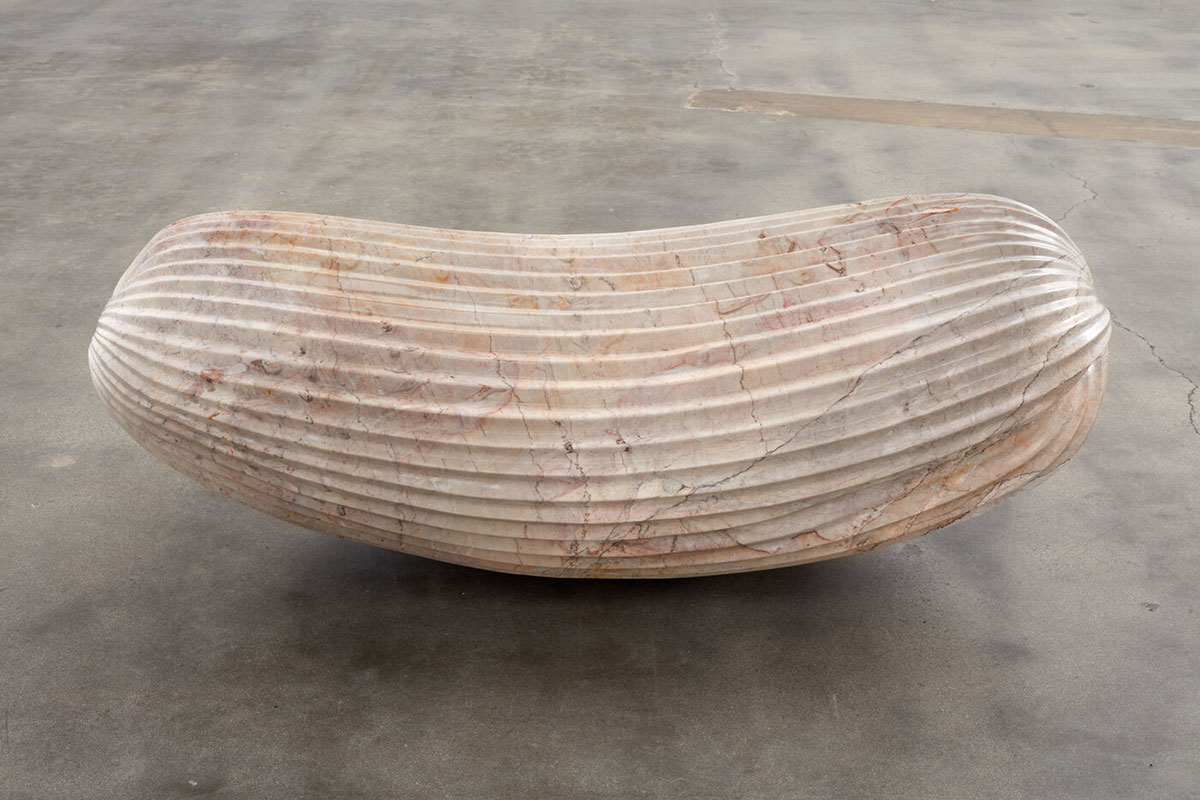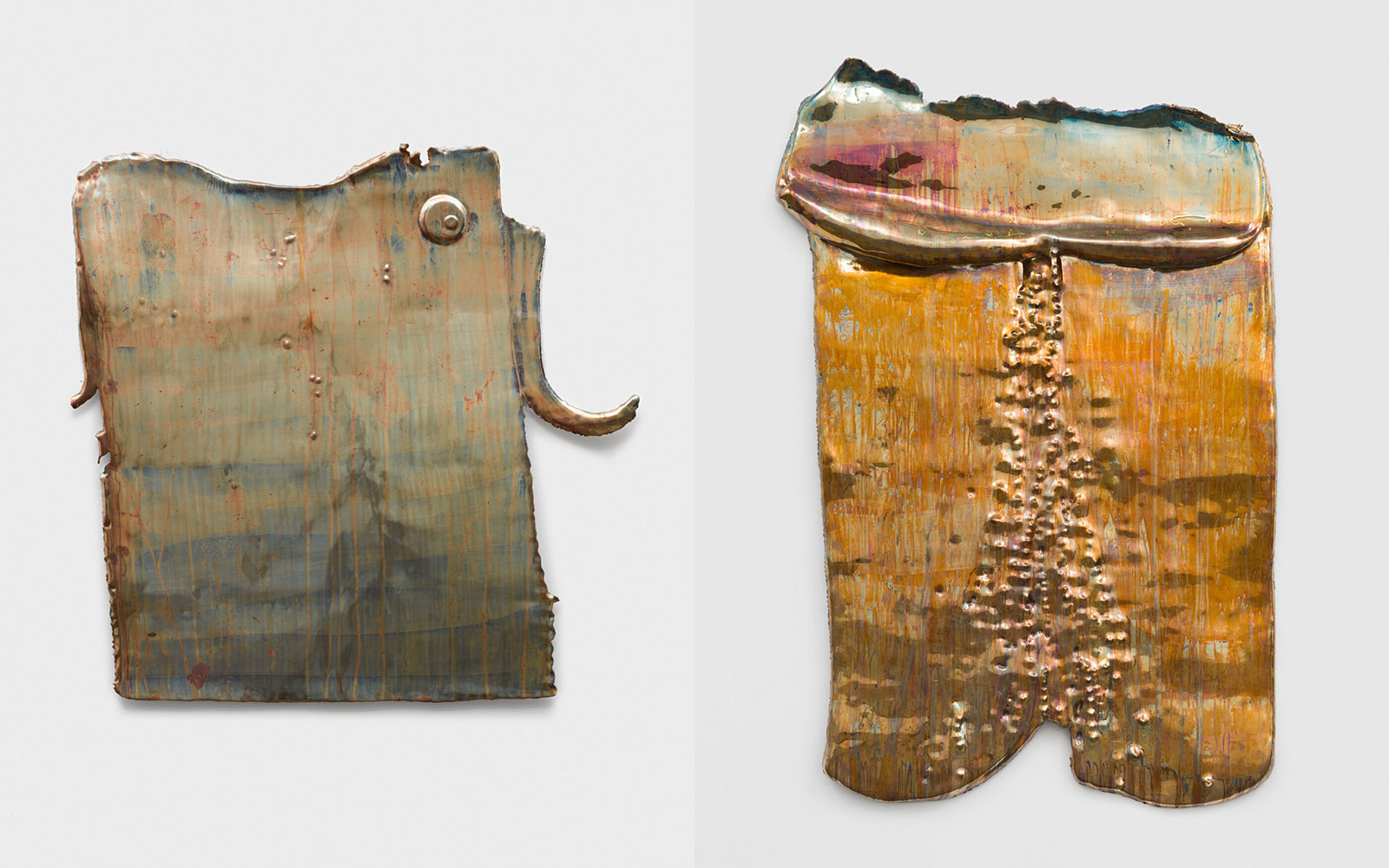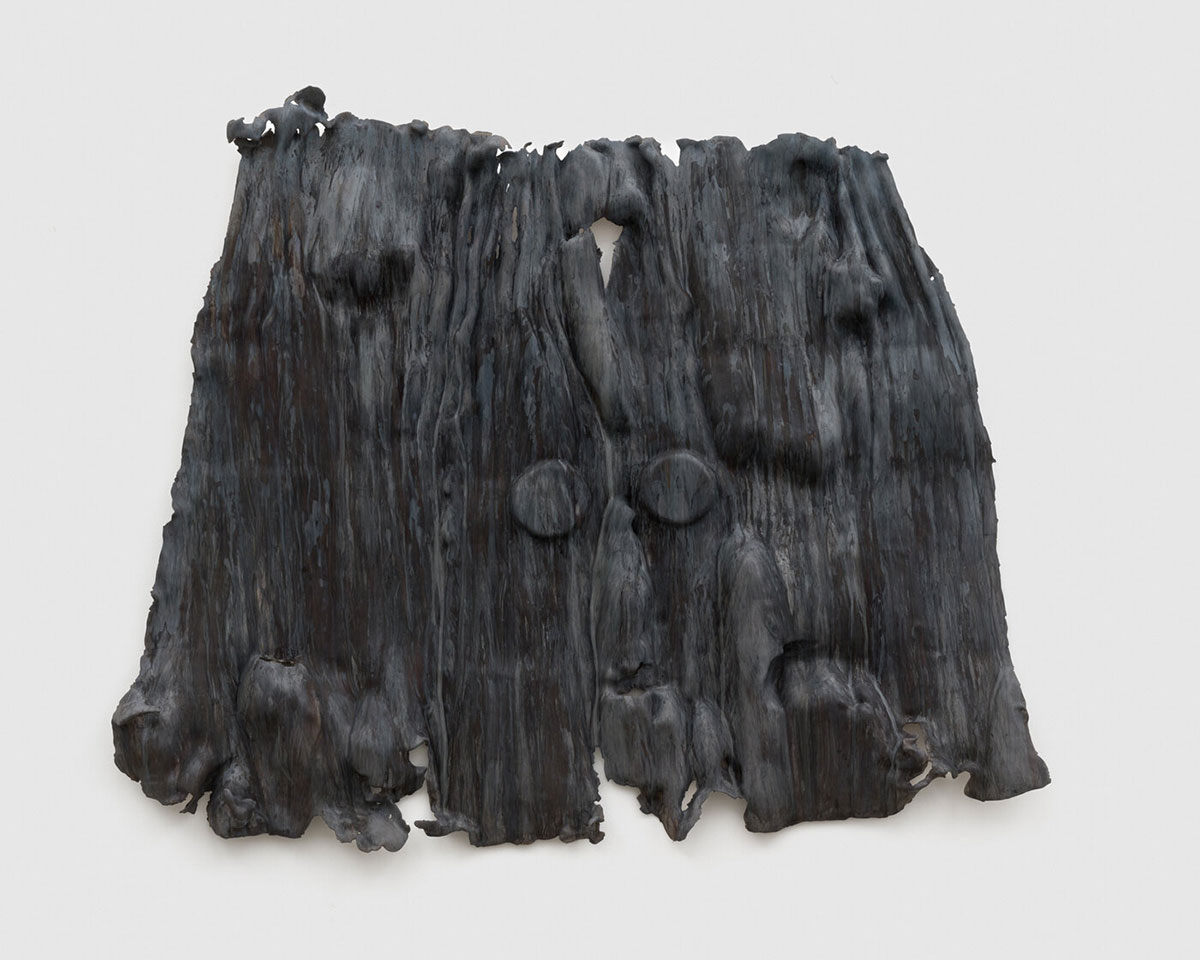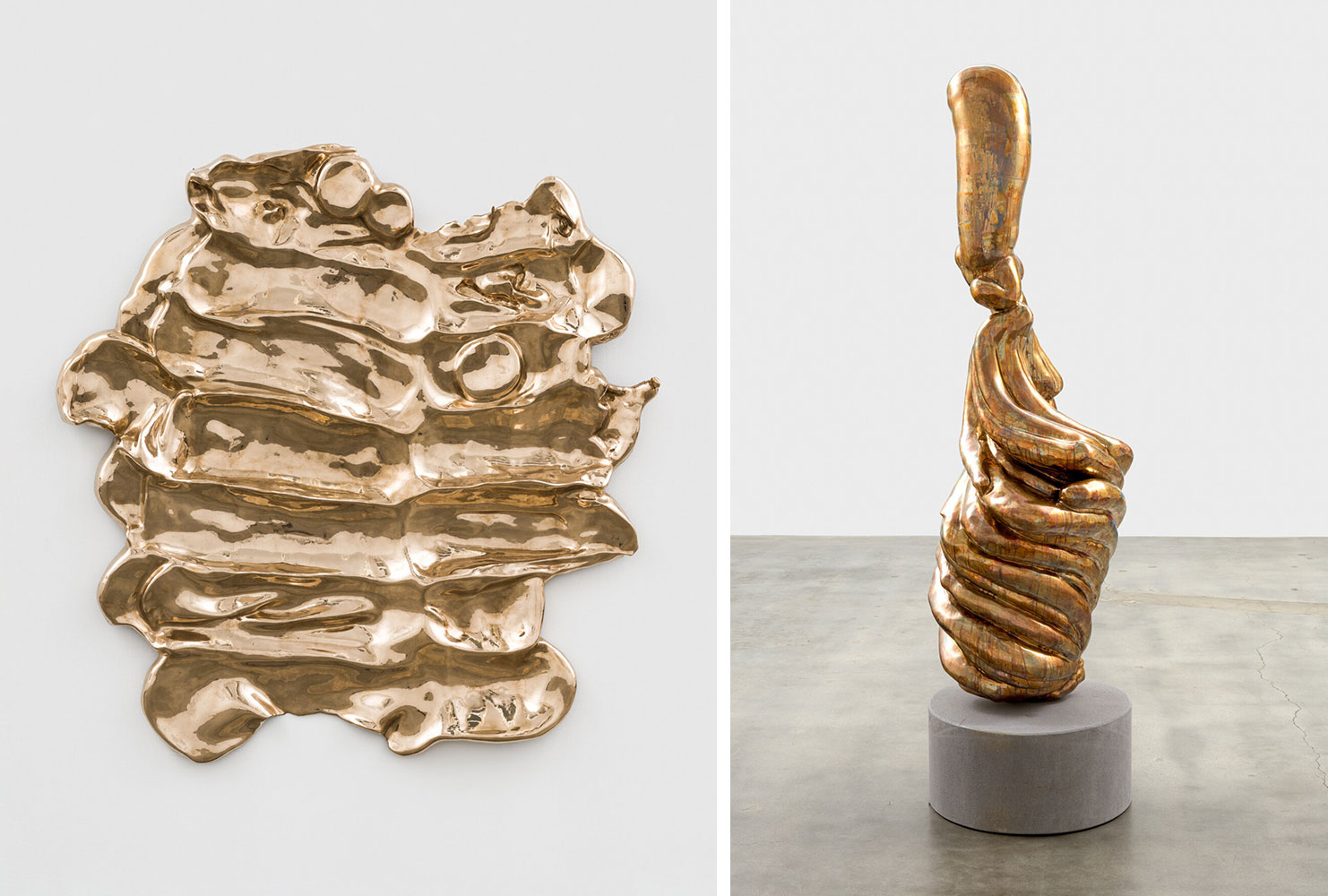ART CITIES: Los Angeles-Alma Allen
 Psychologically charged and compulsively expressive, Alma Allen’s works evoke a curiosity regarding the life of objects and the ways in which form and material can circumnavigate the utility of language. Known for his distillation of diverse organic references, the artist’s works simultaneously invite and resist classification. Often realized in stone, wood, or bronze—materials hand-selected from quarries or foraged from landscapes in the area surrounding his studio—the works emit a mysterious and ineffable lifeforce.
Psychologically charged and compulsively expressive, Alma Allen’s works evoke a curiosity regarding the life of objects and the ways in which form and material can circumnavigate the utility of language. Known for his distillation of diverse organic references, the artist’s works simultaneously invite and resist classification. Often realized in stone, wood, or bronze—materials hand-selected from quarries or foraged from landscapes in the area surrounding his studio—the works emit a mysterious and ineffable lifeforce.
By Efi Michalarou
Photo: Blum & Poe Gallery Archive
Alma Allen began his practice by hand carving salvaged materials into unique small objects. Allen moved to New York in his early twenties and sold the miniature carvings on the street in SoHo, before catching the attention of designers nearby. After almost a decade in New York, Allen relocated to Los Angeles where he began designing furniture and creating large-scale sculptures. After repeated injury from obsessive over-carving left Alma Allen unable to use his hands for extended periods, the artist built a robotic system out of spare assembly line parts and developed its proprietary software as a mechanized extension of hand-carving. Primarily constructed in stone, wood, and bronze, Allen’s sculptures are reminiscent of those by Constantin Brancusi and Isamu Noguchi, reflecting their ardor for experimentation, expressiveness, and originality. Allen’s process is organic and the material itself often dictates the final form—whether anthropomorphic or non-representational. Alma Allen’s solo exhibition in Los Angeles marks the debut of his wall-hanging bronze reliefs. Works ebb and flow in both their shape and color, with reflective surfaces in a high-polish shine or patinas of a painterly soft black. Like rushing water, these sculptures spill out from their station on the wall, reaching toward the viewer, then recoiling back. Calling to mind the peaks and valleys of landscape and body, they offer both a muscular materiality and fluid sense of the expanded experiential plane. Centered amongst the bronzes is a single stone sculpture carved into shiny pleats from a local marble, revealing hues of rose, milk, and umber. Whimsical in form, oblong like a pickle or an eggplant, the soft shape of the work belies its notable weight, a suggestive joke within an abstract charge. In the adjacent garden stands a tall bronze among greenery—a visceral courtship of chaos, it twists in upon itself, both gleaming outwardly and withholding its innermost contents. Like a banyan tree, a bundle of twine, or the fibrous tissue that unites muscle with bone, the strands of this work seem to reflect objects from the natural world in a manner both familiar and infused with intimate notation. Its banded construction may very well reference the flowing lava produced by the eruption of Xitle, a volcano that destroyed Cuicuilco, one of the many pre-Hispanic cities that preceded Mexico City. In preparation for both this and his upcoming museum presentation, Allen explored parallels in his work and in Diego Rivera’s approach to designing the Anahuacalli Museum, his final work. On Rivera’s vision for the pyramid-like building built over lava flow, the museum states that his “genius lay in his ability to recognize… a unique combination of environmental features that constitute an identity that is inseparable from location: rock, earth, breath, blood, the quality of light.” Throughout Allen’s multi-leveled practice, these same qualities are flooded with a psychological valence. Within the collision of elements in Allen’s work is rooted a distinct series of repeated, recognizable gestures that allow poetics, mythologies, and narratives to emerge within the timeless qualities of sculpture and material. Relocating from Joshua Tree to Tepoztlán in 2017, Allen’s work has expanded into and absorbed his new environs, responding to the energetic forces near his studio. His proximity to Mexican stone quarries permits Allen to work directly not only in the carving but the selection of material. Along with his bronze foundry, Allen’s long dedication to making his work within his own studio has expanded craft notions of the handmade and cemented his reputation as a modern steward of classical sculptural techniques.
Photo: Alma Allen, Not Yet Titled, 2022, Marble, 23 1/4 x 65 3/8 x 30 inches, Photo: Evan Walsh, © Alma Allen, Courtesy the artist and Blum & Poe Gallery
Info: Blum & Poe Gallery, 2727 South La Cienega Boulevard, Los Angeles, CA, USA, Duration: 14/1-25/2/2023, Days & Hours: Tue-Sat 10;00-18:00, www.blumandpoe.com/

Right: Alma Allen, Not Yet Titled, 2022, Bronze, 98 x 65 1/2 x 6 inches, Photo: Ed Mumford, © Alma Allen, Courtesy the artist and Blum & Poe Gallery


Right: Alma Allen, Not Yet Titled, 2022, Bronze, recinto pedestal, 97 1/4 x 30 1/4 x 31 inches, Photo: Evan Walsh, © Alma Allen, Courtesy the artist and Blum & Poe Gallery
